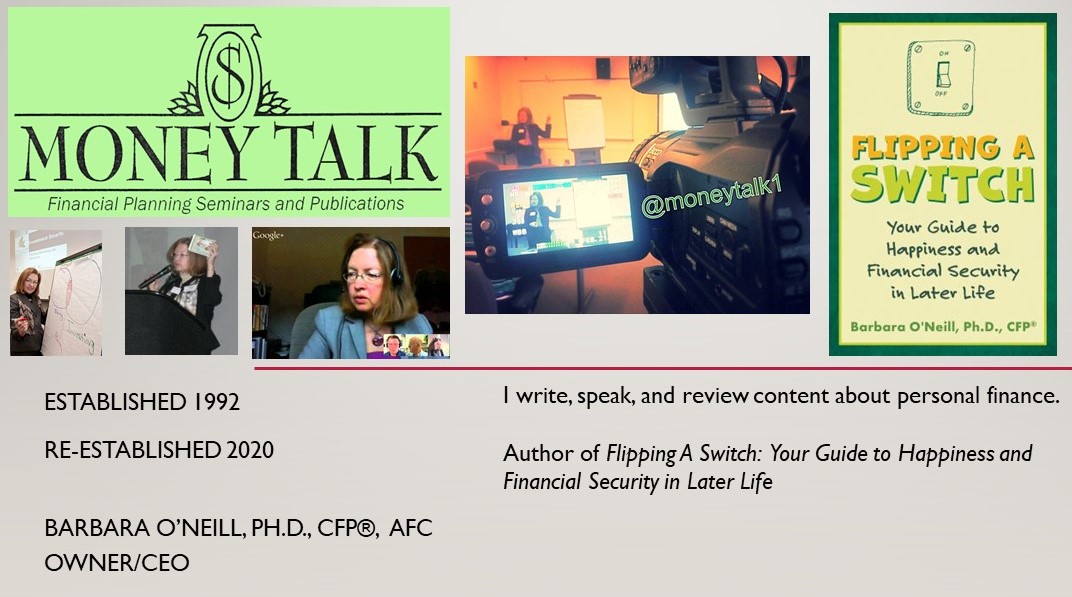Earlier this year, I taught a class and a webinar about inflation where I presented dozens of ways to mitigate the effects of rising prices through reduced spending. Inflation is down significantly from 2022 but still remains elevated. Below is a list of inflation-fighting strategies to consider listed by household expense category:
Groceries
Make substitutions (e.g., applesauce for
eggs in baking), buy store vs. national brands, eat more meatless meals, stock
up on sale items, consider shopping at a warehouse store, eliminate high cost
“junk foods,” use coupons (from online sources and newspaper ads) and double
coupons.
Eating Out
Drink ice water vs. soft drinks or
alcoholic beverages, share an entrée or dessert, eat appetizers as a meal,
select BYOB restaurants for meals eaten with alcoholic drinks, eat out for
lunch vs. dinner or “early bird specials,” and use takeout containers to bring
food home for another meal.
Gasoline
Drive less by consolidating trips for errands,
appointments, and work, find cheap gas with apps (e.g., GasBuddy, Waze), pay
for gas with cash, join a retailer’s fuel rewards program, time your fill-ups
(experts say Sunday and Monday are best), and check tire pressure and lighten
loads.
Utilities
Adjust thermostat (a little warmer in
summer and cooler in winter), turn down water heater to 120 degrees, unplug
items not in use using a power strip, take advantage of off-peak rates, change
HVAC system air filters regularly, use LED light bulbs, and use low-flow
showerheads.
Clothing
Shop department store sales and use
coupons, join retailer loyalty programs to earn rewards, shop at thrift and
consignment stores, shop for deals online (e.g., Asos, Mango, Amazon, Zara),
and make clothing repairs and alterations to extend the life of garments.
Big Ticket Items
Wait inflation out, if you can, until
product inventory increases and/or interest rates and prices come down (e.g.,
houses, cars, computers), compare at least three product or service providers,
negotiate prices with vendors, if possible, and shop around for the lowest
interest rate on loans.
Insurance
Play “what if?” (e.g., I increase
deductible, I change coverage) with an insurance agent, double check policy
discounts you qualify for, compare at least three insurance vendors, sign up
for auto-pay or online billing statements, make fewer payments per year, and
maintain good credit.
In summary there are many ways to “claw
back” the spending power that inflation has taken away. Try different
strategies and stick with those that work for you.
This post provides
general personal finance or consumer decision-making information and does not
address all the variables that apply to an individual’s unique situation. It does
not endorse specific products or services and should not be construed as legal
or financial advice. If professional assistance is required, the services of a
competent professional should be sought.








